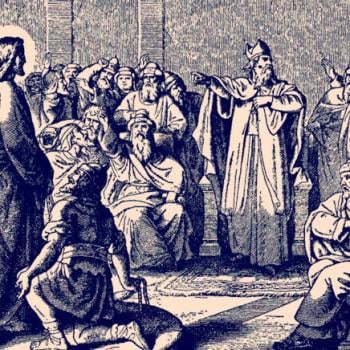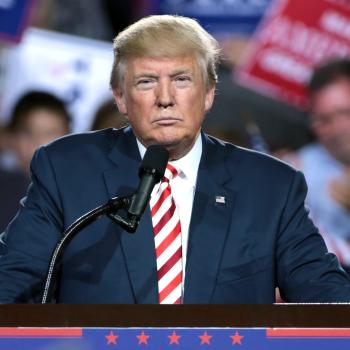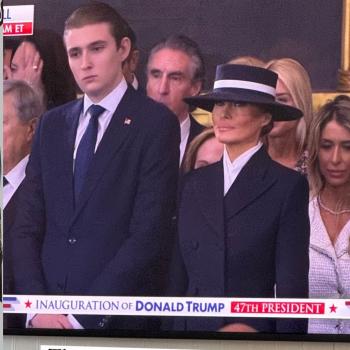
For my fall sabbatical, my family has been blessed with the opportunity to spend four months living in one of the most beautiful parts of the country: the Blue Ridge Mountains of southwestern Virginia.
It’s an area I know fairly well; my parents moved here from Minnesota twenty-three years ago. (The other reason for this move: lots of Oma and Opa time for our kids!) But while I knew this to be one of the reddest parts of a largely blue state, I didn’t realize just how strongly most people down here supported Donald Trump.
According to the RealClearPolitics average of five polls conducted before the Access Hollywood recording was released, Hillary Clinton has a comfortable 9-point lead over Trump in Virginia. To some extent, she might benefit from choosing a Virginia senator (and former governor) for her running mate, but that’s unlikely to help her in Carroll County (where we’re living) and the counties surrounding it.
| County |
% Voting for Tim Kaine in 2005 Gubernatorial Election |
% Voting for Tim Kaine in 2012 U.S. Senate Election |
% Voting for Donald Trump in 2016 Republican Primary |
| Bland |
36.9% |
28.5% |
55.0% |
| Carroll |
38.9% |
32.1% |
53.5% |
| Grayson |
40.3% |
34.0% |
51.8% |
| Patrick |
41.7% |
32.6% |
46.8% |
| Pulaski |
46.5% |
39.6% |
50.7% |
| Wythe |
37.8% |
33.1% |
53.7% |
| ALL VIRGINIA |
51.7% |
52.8% |
34.7% |
In the Christopher Newport University poll that came out last Monday, Trump was down by seven points across the whole state and leads in only one region: the Southwest, where he’s up by 15 points even with Libertarian candidate Gary Johnson polling 11%.
Here and at my own blog, I’ve made abundantly clear my own opposition to Trump’s candidacy. But if empathy (however difficult to achieve) is indeed central to our discipline, then historians like me should seek to understand Trump’s supporters.
So why — in a state that is fairly solidly in Clinton’s column and whose Republican primary voters almost gave a rare victory to Marco Rubio — are the people of southwestern Virginia so much more likely to back Donald Trump?
* * * * *
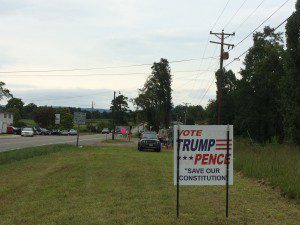
If we were staying a bit further to the west, I’d suspect that energy policy is the distinguishing factor. During primary season Trump promised voters in neighboring West Virginia that he would reopen closed coal mines in Appalachia, and he won majorities of the primary vote in the four coal-producing Virginia counties on the Kentucky border, nearing 70% in Buchanan County. Meanwhile, voters there are suspicious of Clinton’s promise to spend $30 billion to help the region move away from coal mining (much like a previous effort tried to wean Virginia farmers from tobacco). Despite personal ties to Appalachia and a great deal of campaigning four years ago, Tim Kaine did poorly in these counties while running for the Senate, and in the vice-presidential debate Mike Pence made a point of criticizing President Obama for waging a “war on coal.”
Indeed, coal production in Virginia has plummeted in the last few years, and this spring the local newspaper featured a piece on the geological and other reasons for that decline. But we’re living on the fringes of coal country, where the loss of non-mining blue-collar jobs is the more pressing issue.
In the first debate, Trump’s strongest moment probably came early on, when he blamed the loss of manufacturing jobs on trade deals negotiated under Democratic presidents. Whether that (or his pledge that he can bring those jobs back) is true or not, it’s a concern that resonates in counties like the one where my parents live. In 2007, Pulaski Furniture Company completed the shutdown of its plant in its namesake town, and according to the Roanoke Times, began to import its products.
At the end of the day, though, I suspect that Trump is tapping into something deeper than grievances about trade or energy policy. We could certainly talk about religion (in a region where Baptist, Pentecostal, and other conservative churches are omnipresent), or race (in the whitest part of Virginia). But because I’m a historian, I keep thinking about something that runs deeper than rational political calculation: how people make meaning of the past.
* * * * *
Coming from a Midwestern suburb where our 1952-built house is considered old, coming east can feel like a time warp. You drive over trails blazed by Daniel Boone and pass through cities older than the Constitution. You tune in to a North Carolina radio station advertising itself as the home for “Old Time String Music” and stumble upon a recording of a temperance sermon by a fiery Holiness preacher who’s been dead for years.
You get to explain to your children why Americans fly the battle flag of a rebellion that was defeated over 150 years ago. (It was while living in the Blue Ridge that Tony Horwitz met the Civil War reenactors who inspired him to write Confederates in the Attic.) Fortunately, we’re headed home before Christmas and won’t have to answer questions about Virginia placing Lee-Jackson Day at the other end of a long weekend from Martin Luther King, Jr. Day.
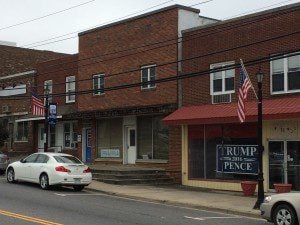
Pulaski is actually younger than Reconstruction, but like most towns around here, signs proclaim its downtown to be “historic.” Indeed, the buildings on the town’s quiet Main Street seem like artifacts from another time, much like the now-empty furniture factory down the hill from my parents’ Victorian house.
What to do with such “historic” districts seems like a common problem in the region, with some towns willing to contemplate rather desperate changes. According to longtime Richmond Times-Dispatch reporter Rex Bowman, Pulaski’s leaders once considered one older resident’s idea of turning downtown into a Polish village, an imagined past honoring the largely Scots-Irish town’s namesake: a Polish noble who fought and died on the American side in the Revolutionary War.
While it makes clear his affection for the people in a region he loves “above all places on earth,” Bowman’s book, Blue Ridge Chronicles, is permeated with wistful descriptions of decay: not just shuttered shops on Main Streets, but other businesses made obsolete by technological, demographic, and economic change. (In our own travels, I’ve lost count of the number of times we’ve driven by an abandoned farmhouse or barn crumbling in on itself as grasses and trees begin to reclaim the land.) Even a village called Novelty has “its heyday behind it.”
So the past is ever present — and constantly evoking a complicated web of feelings: pride and shame, regret and resilience, defiance and despair.
Some have tried to embrace change. For example, burgeoning STEM programs at Virginia Tech in Blacksburg have led to southwestern Virginia being rebranded as the state’s “Technology Corridor.”
But in Pulaski, as in so many other towns, most revitalization efforts have instead doubled down on nostalgia. Nothing came of the proposed Polish makeover, but at the well-done new transportation museum, my kids watch O-gauge trains chug through an 80-foot model of Pulaski as it looked sixty years ago. (The museum stands kitty-corner from a train depot that last welcomed passengers in the 1970s, still unused after years of talk about linking Pulaski by rail with more prosperous cities like Blacksburg and Roanoke.) Perhaps the most successful growth industry was antiquing, which experienced a boom that has since abated. The theatre on Main Street, first built in 1911, has been renovated; its next three events are a screening of an old horror movie, a veterans concert featuring big band music, and a Johnny Cash tribute.
* * * * *
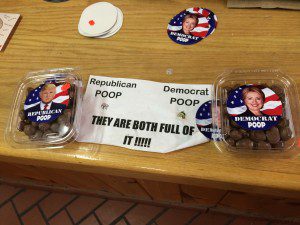
There’s something admirable about this commitment to the past. It contrasts sharply with the way that people in my part of the country simply clear ruins out of the way of the newest eight-lane freeway, big box business, or row of McMansions. As Peggy Bendroth points out in The Spiritual Practice of Remembering, that’s one reason those of us who live in cities and suburbs so often feel detached from any sense of collective memory.
And while it may seem ironic that people whose identity is so tied up with the past are looking hopefully to a real estate developer, it’s not hard to see why they resonate with Trump’s promise to “Make America Great Again.” (Or why there’s such a gap here with Democratic voters — many of whom named years as recent as, well, 2016 when asked just when America was at its greatest.) Stripped of complexity and nuance, the language of nostalgia may rankle historians like me; and continued commitment to Confederate “heritage” is increasingly hard to stomach in a post-Charleston America. But that kind of meaning-making is hardly an unusual strategy for coping with uncontrollable change. “Besides enhancing an acceptable present,” observed David Lowenthal in the original edition of The Past Is a Foreign Country, “the past offers alternatives to an unacceptable present.”
So even a supremely unacceptable candidate can, as Ronald Brownstein has argued, deploy nostalgia in such a way as to “touch the pervasive sense of loss among many of his supporters—the belief that the changes molding modern America have marginalized them economically, demographically, and culturally.”
Cross-posted at The Pietist Schoolman




